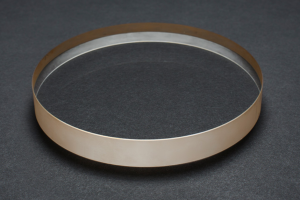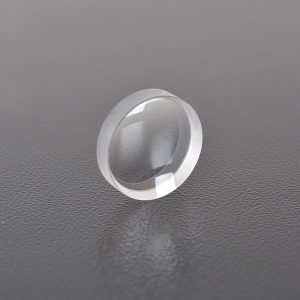
Wedge Prism: a Key Role in Optical Component Manufacturing
The wedge prism focuses on beam deflection, separation and merging, enabling high-precision optical needs in laser, medical, communication and other fields. From precision machining to coating technology, manufacturers use nano-level finish and strict testing to ensure that each prism meets the stringent standards of laser and scientific research instruments, driving optical technology to a smarter and customized future breakthrough.
Wedge prism is a common optical component, widely used in laser systems, imaging equipment, spectrometers and other fields. Its unique design enables it to change the direction of the beam, separate or merge the beam, and therefore plays an important role in modern optical technology. This article will explore in depth the role, production process, quality control and market trends of wedge prism manufacturers.
1. Basic principles and applications of wedge prisms
Wedge prisms are optical prisms with inclined surfaces, usually composed of two planes to form a wedge angle. Its main functions include:
1. Beam deflection: Wedge prisms can deflect the incident beam by a certain angle, and are often used in applications such as laser collimation and beam adjustment.
2. Beam separation: Through a wedge prism, a beam of light can be split into two beams, which is suitable for interferometers, spectrometers and other equipment.
3. Beam merging: A wedge prism can also merge two beams of light into one beam, which is often used in laser beam combining technology.
Due to its versatility, wedge prisms have been widely used in laser processing, medical equipment, communication systems, scientific research instruments and other fields.
2. The core role of wedge prism manufacturers
The production of wedge prisms requires a high degree of technical precision and strict quality control. Therefore, professional wedge prism manufacturers play a vital role in the manufacture of optical components. The following are the main responsibilities of manufacturers in the production and supply process:
1. Design and customization: According to customer needs, manufacturers need to provide customized wedge prism designs to ensure that they can meet specific optical performance requirements.
2. Material selection: Wedge prisms are usually made of optical glass, quartz, calcium fluoride and other materials. Manufacturers need to select suitable materials according to the application scenario to ensure the light transmittance, heat resistance and corrosion resistance of the prism.
3. Precision machining: The production of wedge prisms requires high-precision machining equipment, such as CNC machine tools, polishing machines, etc. Manufacturers must ensure that the surface finish, angle accuracy and dimensional tolerance of the prism meet the standards.
4. Coating technology: In order to enhance the optical performance of the prism, manufacturers usually coat the surface of the prism with anti-reflection film, reflective film, etc. to reduce light loss or enhance the reflectivity of specific wavelengths.
5. Quality control: Manufacturers need to pass a strict quality inspection process to ensure that the optical performance, mechanical properties and dimensional accuracy of each prism meet customer requirements.
3. Production process of wedge prisms
The production process of wedge prisms involves multiple steps, each of which requires a high degree of technical precision and strict quality control. The following are the main production processes:
1. Material cutting: First, according to the design requirements, the optical material is cut into a preliminary prism shape.
2. Rough grinding and fine grinding: Through the rough grinding and fine grinding process, the surface of the prism is processed to a near-final shape, and its angle and size meet the design requirements.
3. Polishing: The polishing process is a key step to ensure the surface finish of the prism. Through polishing, the surface of the prism can reach nanometer-level smoothness, reducing light scattering and loss.
4. Coating: Depending on the application requirements, the surface of the prism may need to be coated to enhance its optical performance.
5. Inspection and calibration: Finally, the manufacturer needs to perform optical performance inspection on the prism to ensure that its beam deflection angle, transmittance and other parameters meet the standards.
4. Quality control of wedge prism manufacturers
Quality control is one of the most critical links in the production process of wedge prisms. Manufacturers usually adopt the following measures to ensure product quality:
1. Optical performance inspection: Use interferometers, spectrophotometers and other equipment to detect the optical properties of the prism, such as transmittance, reflectivity, and beam deflection angle.
2. Dimensional accuracy inspection: Use high-precision measuring instruments to ensure that the dimensional tolerance and angular accuracy of the prism meet the design requirements.
3. Surface quality inspection: Use microscopes, surface roughness meters and other equipment to detect the finish and defects of the prism surface.
4. Environmental testing: In order to ensure the stability of the prism in different environments, manufacturers may need to conduct environmental tests such as temperature, humidity, and vibration.
5. Market trends and future prospects
With the continuous development of optical technology, the application areas of wedge prisms are also expanding. The following are the main trends in the current market:
1. Increasing demand for high precision: With the rapid development of laser technology, precision instruments and other fields, the precision requirements for wedge prisms are getting higher and higher. Manufacturers need to continuously improve processing technology and testing methods to meet market demand.
2. Growing demand for customization: Different application scenarios have different performance requirements for wedge prisms, and customized demand has gradually become the mainstream of the market. Manufacturers need to have flexible design and production capabilities to meet the personalized needs of customers.
3. Application of new materials: With the development of new material technology, the application of materials such as calcium fluoride and sapphire in wedge prisms has gradually increased. These materials have higher light transmittance and heat resistance, and can meet more demanding application environments.
4. Automated production: In order to improve production efficiency and product quality, more and more manufacturers have begun to introduce automated production lines to reduce human errors and improve production consistency.
6. Conclusion
As an important component in the optical system, the manufacturing process of wedge prism requires high technical precision and strict quality control. Professional wedge prism manufacturers provide strong support for the development of optical technology through advanced production processes, strict quality inspections and flexible customized services. With the continuous changes in market demand, manufacturers need to continue to innovate and improve their technical level to meet future challenges and opportunities.
Whether it is laser processing, medical equipment or scientific research instruments, wedge prisms will continue to play an important role in promoting the advancement and application of optical technology.
Hanzhong Brisun Optics Co., Ltd. Is the high precision optical element manufacturer provides customized production of Various optical lenses, including spherical lens, cylindrical lens, optical window, mirror, prism, filter, metal base mirror and other high-precision optical elements. The base materials include various optical glass, fused quartz, calcium fluoride (CaF2), zinc selenide (ZnSe), germanium (GE), silicon (SI), sapphire, metal and other materials. And provide antireflective film, high reflection film, spectroscopic film, metal film and other optical coatings.
Welcome to OEM and Purchasing!


